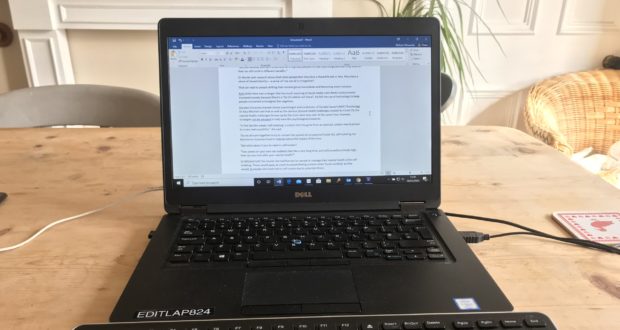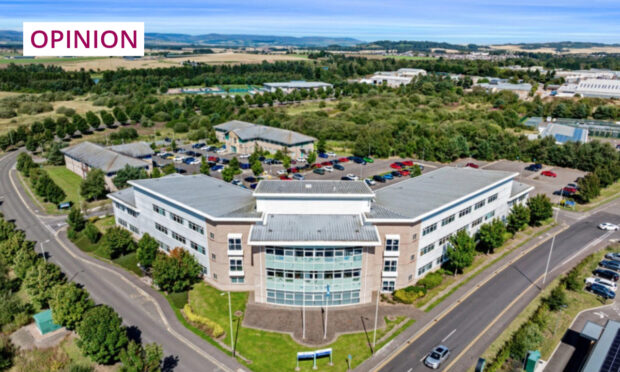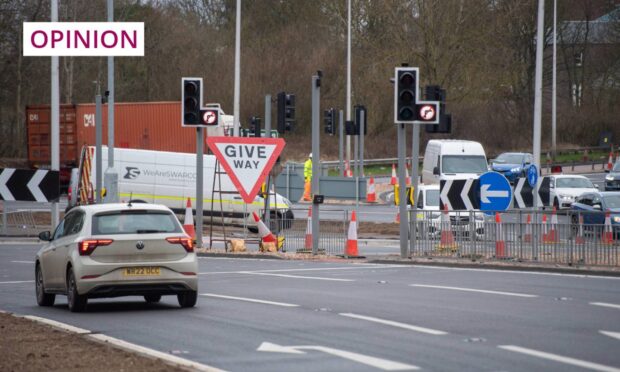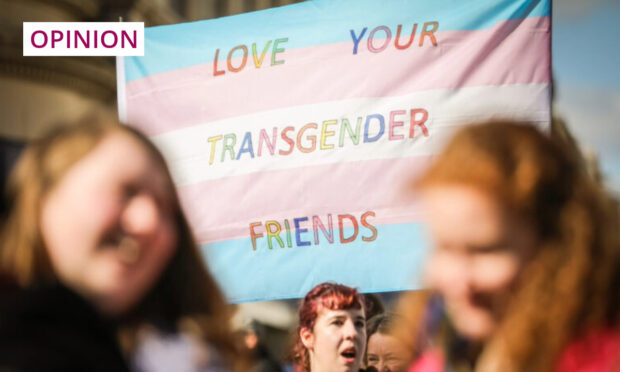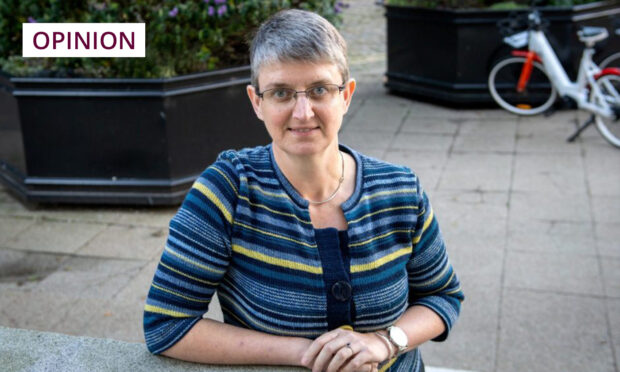Sir, – The world class nature of Dundee based Insights is ably demonstrated by CEO Andy Lothian.
In the Business Matters section (Courier, July 28) Mr Lothian says, “The moment of adversity is the seed of opportunity.”
It is disappointing therefore that there is a rush and push from Number 10 Downing Street to get the economy of the UK back to normal and the nation rebooted by way of coffee shop and sandwich bar purchases.
This means herding people back on to trains and buses to go to city centre office blocks and restoring our huge carbon footprint and stressful, expensive journeys.
It also means a return to the (non) disposable coffee cup mountain, again with disproportionate daily expense.
Number 10 could use this adversity more wisely and tackle at least three current issues.
The environment, a shortage of affordable housing and university education all present an opportunity for a rethink.
While not all jobs can be done remotely, many can and it would be sad if businesses reverted to the air miles and rail miles default mode of working. Rough sleeping and building on the ever shrinking greenbelt could then be reduced by converting city centre office blocks into affordable housing. Universities have expanded beyond belief and, sadly, many graduates face unemployment and lifelong loan repayments because of a mismatch between the new economies and their academic expertise.
Do we really need 50% of our young people in higher education?
Chancellor Rishi Sunak has also fallen into the trap of narrow thinking by offering discounts for restaurant meals as a quick fix for the economy.
Not only is this a one-dimensional idea, it also comes at a time when the prime minister is on a mission to get us to lose weight.
Is it too much to expect that our governments use this moment of adversity as the seed of opportunity and think in a more coherent manner?
Ron J Scrimgeour.
39 Gowan Rig,
Forfar.
EU withdrawal has cost us dear
Sir, – The European Council recently agreed that alongside its almost trillion pound 2021-2027 budget the Commission will borrow over £680 billion in the financial markets.
This aims to assist member states’ recovery from Covid-19 and will include over £350 billion in grants.
The Economic Recovery Package includes grants for rural areas and the higher education sector, as well as environmental projects.
Countries’ allocations are based on the projected economic harm resulting from Covid, and Scotland may have received something in the region of £5.4bn.
By contrast, the UK Government has allocated only £3.7bn to Scotland, Wales and Northern Ireland.
As an independent member of the EU, Scotland would clearly have been a major beneficiary from such an arrangement and yet again the UK’s withdrawal from the EU continues to cost us dear.
Alex Orr.
Marchmont Road,
Edinburgh.
Desperate Establishment
Sir, – Regina Erich’s claim (Hypocrisy from first minister, Courier, July 27) that Nicola Sturgeon is using the daily Covid-19 updates as a political tool with which to attack Boris Johnson and the London parliament is at odds with the actuality.
Our first minister was asked repeatedly to respond to Johnson’s overtly political campaigning during the question and answer section of the programme, in spite of her insistence on focusing solely on the health issues.
Her response was to remind journalists that Scotland-sized countries around the globe were also borrowing in order to mitigate the economic consequences of Covid-19, and pointing out the fact Scottish taxpayers will be paying their share of London’s own borrowing programme.
The first minister is pressed time again about matters, usually constitutional, outwith the ambit of the update’s purpose, with the smallest deviation being used as political capital against her by an increasingly desperate British establishment.
One Nation Conservatism is the stated goal of Boris Johnson.
How he and his colleagues intend to achieve such an outcome in a Tory-minority Scotland will consist of a programme more redolent of assimilation than integration, with the only truly representative parliament Scots possess being bypassed or overruled.
Ken Clark.
c/o 15 Thorter Way,
Dundee.
Data would inform choices
Sir, – I’m sure we are all glad that Scotland is doing comparatively well regarding bringing down the coronavirus numbers.
But to stem any ‘second wave’ of infection I believe we must trace and identify Covid carriers in a stronger and more meaningful way so the public can recognise the areas to which such sufferers belong.
Merely knowing that they exist ‘somewhere in Scotland’ is not enough!
For example, I live in a small village without shops so I am forced to visit one of two nearby towns for my purchases.
I am of the belief that one of those towns has a number of Covid carriers while the other is comparatively free of the virus, and is thus safer.
My problem is I have never seen infection rates published for either of those towns. What I’d like to see is an automatically updated list of the rise and fall in the number of Covid-19 carriers in each town or in the various suburbs within larger cities.
Surely, with regular publication of such statistics, most of us would avoid going to such ‘hotspots’ and, by keeping clear of shops and pubs in such an area, we would reduce the chance of picking up and spreading any infection.
Archibald Lawrie.
Kingskettle,
Fife.
PM ‘holding purse strings’
Sir, – Douglas Cowe’s reaction (Thinking with heart not head, Courier, July 28) to the visit by the Prime Minister Johnson to Scotland seems rather one of overstated indignation.
Scottish produce across the board is being rebranded almost daily by Union Jacks.
I wonder why? Let’s be clear, Boris Johnson, and for that matter Steve Barclay’s visit to Edinburgh, is part of a strategy to try and resurrect Conservative fortunes in Scotland.
Boris Johnson’s rhetoric speaks for itself.
The “might of the union “ arriving on our doorstep as he called it.
On close examination PM Johnson and Steve Barclay are in the first wave of such visits.
Already Michael Gove has appeared in the Highlands.
The mainstay of the strategy is to let us know who holds the purse strings and that we Scots should be grateful for the largesse and handouts we have been receiving.
The prime minister shouting out loud a list of cash support (Westminster borrowed money) provided by his government throughout the Covid-19 crisis.
Support for Scottish jobs, loans to our businesses, money for PPE, VAT cuts and even the support of the Army.
How mighty is the power of the union without which Scotland would have sunk without trace under to Covid 19 pandemic? Such visits will do little to stop independence.
Dan Wood.
Charles Melvin Gardens,
Kirriemuir.
